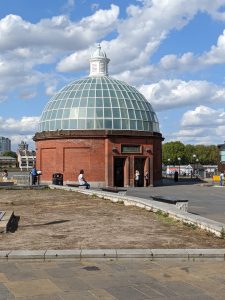Waterloo 2022: the Battlefield Tour
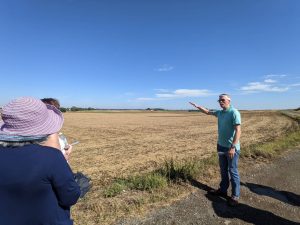
It’s taken me a few weeks to put together a description of the full day’s tour of the Waterloo Battlefield, partly because events rather took over once I got back to the UK but mostly because I needed a bit of distance before trying to describe the day.
Once again I’m not going to attempt to put together a battlefield guide of my own, based on Gareth’s incredible tour. He’s written so much about the battle himself that it would be utterly superfluous. My recommendation is that people who want to know more go away and find his books. I’ve recently read his Waterloo: myth and reality which is a brilliant overview of the campaign, pointing out some of the enduring myths and stories over the years and sifting through the evidence to suggest what the truth might be. It’s very readable and is a great place to start.
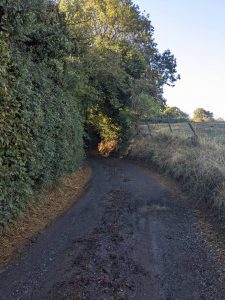 Number One London Tours did an excellent job of managing the various walking abilities of its tour members and the bus moved around the battlefield with us to enable those needing a rest to hop on and off. Some of us walked the whole way. One of the first things I really noticed, being on the ground at Waterloo is that the battlefield is far more undulating than it looks from photographs or from the top of the Lion’s Mound. Crossing from the left to the right of Wellington’s lines before walking down to do the same with the French lines, it’s very clear that commanders, officers and men really couldn’t see what was happening in different parts of the battlefield.
Number One London Tours did an excellent job of managing the various walking abilities of its tour members and the bus moved around the battlefield with us to enable those needing a rest to hop on and off. Some of us walked the whole way. One of the first things I really noticed, being on the ground at Waterloo is that the battlefield is far more undulating than it looks from photographs or from the top of the Lion’s Mound. Crossing from the left to the right of Wellington’s lines before walking down to do the same with the French lines, it’s very clear that commanders, officers and men really couldn’t see what was happening in different parts of the battlefield.
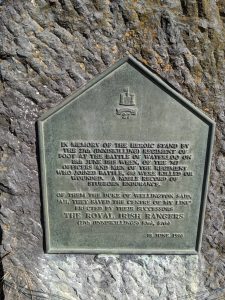 Features of the landscape like the covered way which is still partly visible, waist and head-high crops and surprisingly steep ridges help the story of the battle unfold far more easily than looking at maps. Gareth had maps a plenty though, to demonstrate each stage of the fighting as we reached it, starting from Papelotte and moving around the various parts of the field. He had also brought a copy of his fantastic Waterloo Archive Map Book which includes a large collection of contemporary sketches and maps but also artists impressions of the battlefield and surrounding countryside. I probably don’t need to tell you that I’ve already ordered a copy.
Features of the landscape like the covered way which is still partly visible, waist and head-high crops and surprisingly steep ridges help the story of the battle unfold far more easily than looking at maps. Gareth had maps a plenty though, to demonstrate each stage of the fighting as we reached it, starting from Papelotte and moving around the various parts of the field. He had also brought a copy of his fantastic Waterloo Archive Map Book which includes a large collection of contemporary sketches and maps but also artists impressions of the battlefield and surrounding countryside. I probably don’t need to tell you that I’ve already ordered a copy.
 Interspersed with clear, easy to understand descriptions of troop movements and the various attacks at different stages of the battle, were the individual stories from both Gareth and Kristine about the men who fought, suffered and died at Waterloo. I’ve seen many of these accounts before but hearing them read out on the ground where the action took place gave them a whole new meaning.
Interspersed with clear, easy to understand descriptions of troop movements and the various attacks at different stages of the battle, were the individual stories from both Gareth and Kristine about the men who fought, suffered and died at Waterloo. I’ve seen many of these accounts before but hearing them read out on the ground where the action took place gave them a whole new meaning.
Despite a lot of development on and around the battlefield, Waterloo reminds me of Salamanca in that it’s still very easy to get a sense of the countryside as it must have been on that wet morning in June 1815 when Wellington deployed his mismatched army along the ridge at Mont St Jean and hoped that the Prussians would arrive. We walked over the same fields as the British, the Dutch and Belgian, the French and Prussians. It was a beautiful sunny day, not at all the right atmosphere for ghosts, but it was surprisingly easy to imagine the crash of guns, the squeal of terrified horses and the tramping of thousands of feet.
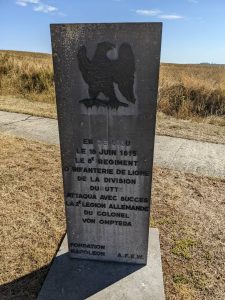 It was also horribly easy to imagine the aftermath, with dead and wounded strewn across the field. Injured men staggered towards anywhere they might find help and too many of them fell by the wayside. The memorials to the different armies and regiments as well as to a few individuals which are scattered around the battlefield highlight the poignant truth that most men who died at Waterloo had no marked grave, no memorial and quite possibly may not even have been buried at all.
It was also horribly easy to imagine the aftermath, with dead and wounded strewn across the field. Injured men staggered towards anywhere they might find help and too many of them fell by the wayside. The memorials to the different armies and regiments as well as to a few individuals which are scattered around the battlefield highlight the poignant truth that most men who died at Waterloo had no marked grave, no memorial and quite possibly may not even have been buried at all.
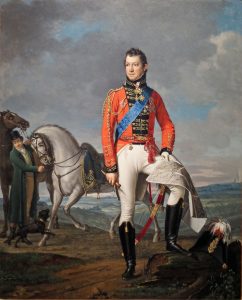
I’ve not reached the Battle of Waterloo with my fictional regiment yet, but throughout this tour names have been mentioned of men I know about, have read about and have written about as real people. Picton’s death, Charles Alten’s serious injuries and poor Juana Smith’s mistaken belief that her beloved Harry lay dead on that grisly field somehow have a new meaning now. Entwined with them will be the fate of my fictional characters, who over the past five years have become utterly real to me. I still don’t know myself what happens to them all on the bloody field of Waterloo but whether they live or die, I don’t suppose any of them will be the same afterwards.
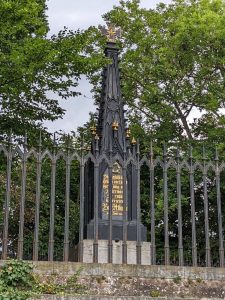
We ended our tour of the battlefield with a walk up to the Prussian memorial at Plancenoit and with a drink at Le Gros Velo, sitting in the sunshine opposite the church. It isn’t the same church that was there in 1815. That one was destroyed during the battle but it has been rebuilt on the same site and there are several memorial plaques on the walls. I can remember going to Badajoz back in 2017 and discovering that sometimes, in a place where great tragedy and suffering occurred, it’s what isn’t left behind that affects me more powerfully than what is.
For our last evening we had a farewell dinner at Les Deux Sil, the Italian restaurant on the edge of the battlefield. It was a lovely meal and a lovely evening with a real sense of camaraderie. I’ve thoroughly enjoyed getting to know these people and hope to meet some of them on future trips.
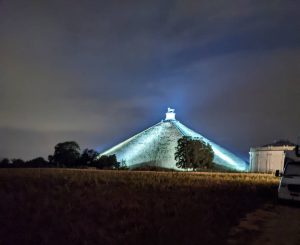 When we emerged, it was dark. Kristine had bought some flowers and a few of us walked up towards the Lion’s Mound which is lit up at night. It looked spectacular and despite all the jokes about it spoiling the battlefield, it felt like a fitting memorial that night, not to the Prince of Orange or Wellington or to any of the other individual commanders but to the thousands of anonymous men and animals who died on that field two hundred and seven years ago.
When we emerged, it was dark. Kristine had bought some flowers and a few of us walked up towards the Lion’s Mound which is lit up at night. It looked spectacular and despite all the jokes about it spoiling the battlefield, it felt like a fitting memorial that night, not to the Prince of Orange or Wellington or to any of the other individual commanders but to the thousands of anonymous men and animals who died on that field two hundred and seven years ago.
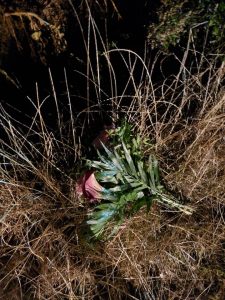 We placed the flowers on the edge of the field, not on any particular monument but just on a spot where any man might have fallen and stood quietly, listening on a phone to John Tams singing Spanish Ladies, a haunting folk song. A version of that song existed in 1815 and might have been sung by the campfires by men who did not survive that day. It seemed an appropriate memorial to the ordinary soldiers and the perfect way to end Waterloo 2022: the Battlefield Tour.
We placed the flowers on the edge of the field, not on any particular monument but just on a spot where any man might have fallen and stood quietly, listening on a phone to John Tams singing Spanish Ladies, a haunting folk song. A version of that song existed in 1815 and might have been sung by the campfires by men who did not survive that day. It seemed an appropriate memorial to the ordinary soldiers and the perfect way to end Waterloo 2022: the Battlefield Tour.
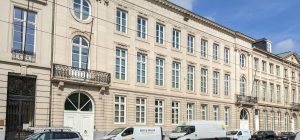
I’d like to thank Gareth Glover and Kristine Hughes Patrone from Number One London Tours as well as all my fellow tourists for making this a fascinating but also very moving experience. I’ve come home with pages of notes and loads of ideas about how the 110th infantry might fit in to the battle on the day. It would be so tempting to jump ahead, but I’m not going to. My lads had to go all the way through that war, so I’m going with them every step of the way.

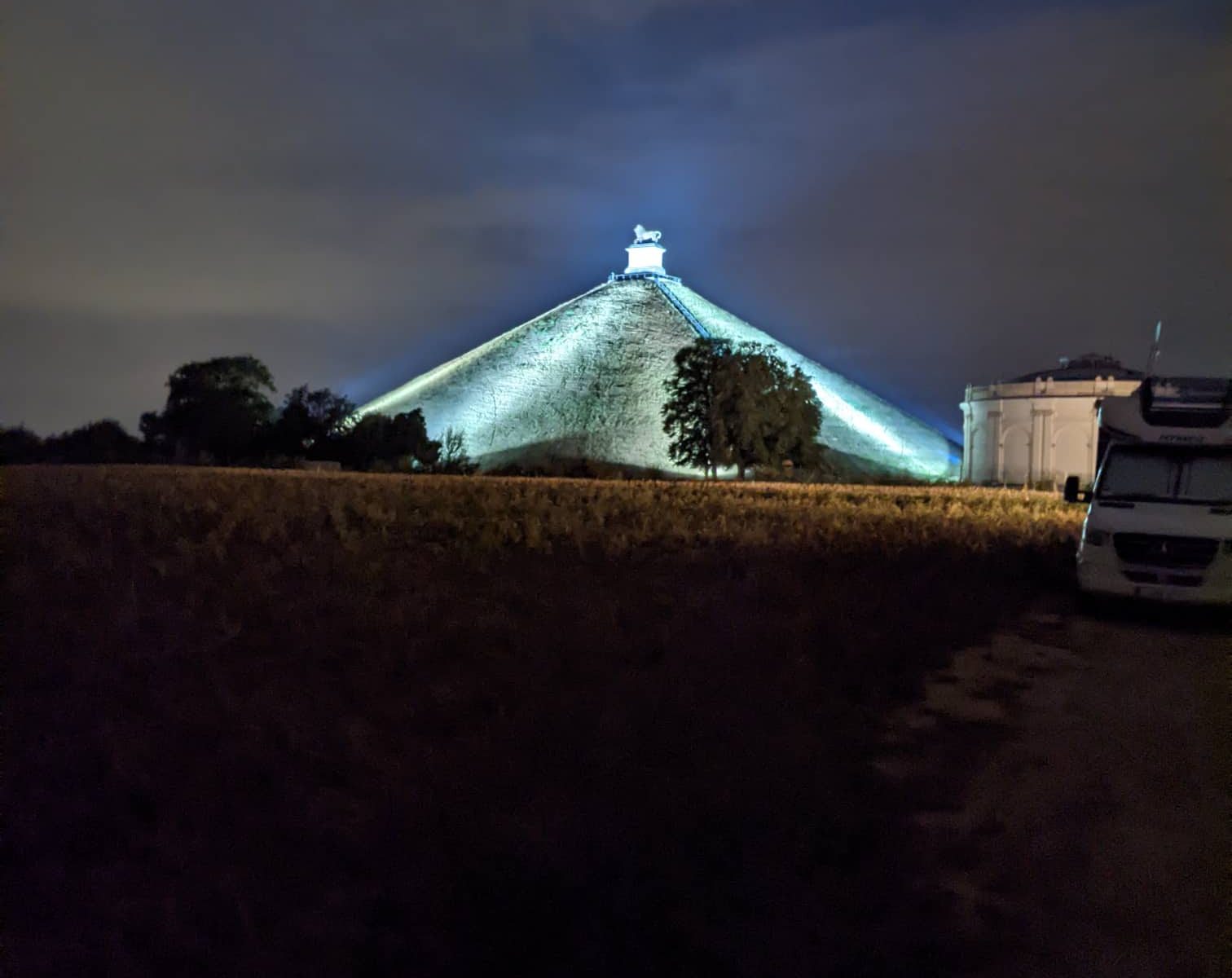
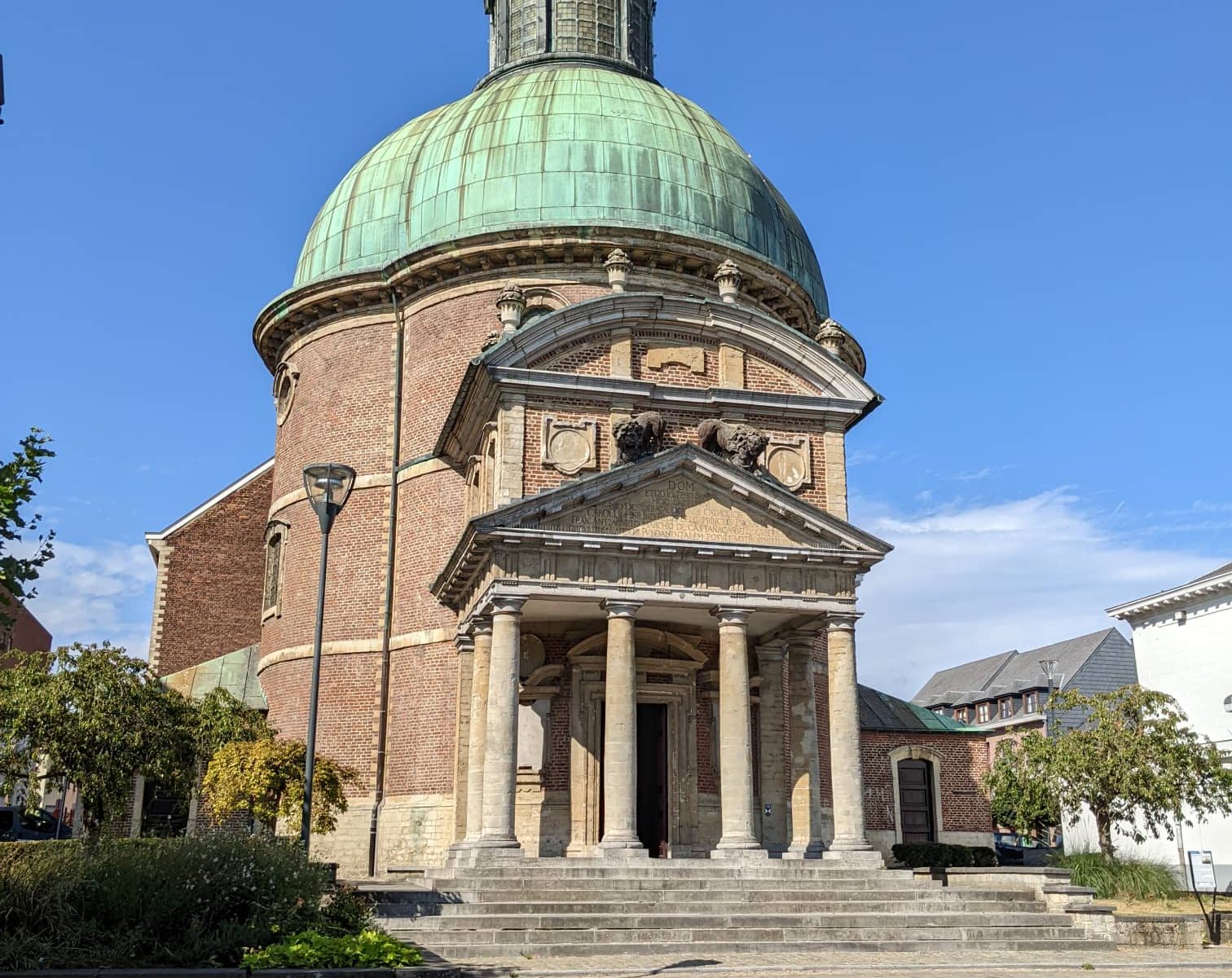
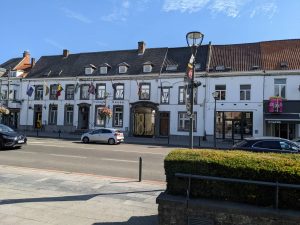
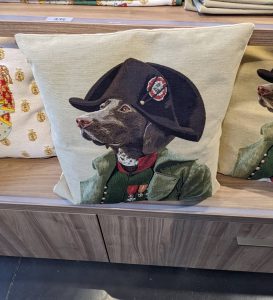 I have no idea whether there’s something political about this, whether it’s considered Napoleon was the most important person at Waterloo given that he was an Emperor or whether they just don’t think Wellington or Blucher memorabilia will sell. I do think it should probably be redressed, but if it’s a marketing decision then I guess that’s a good enough reason. All the same, Napoleon as a dog was a bit much for me.
I have no idea whether there’s something political about this, whether it’s considered Napoleon was the most important person at Waterloo given that he was an Emperor or whether they just don’t think Wellington or Blucher memorabilia will sell. I do think it should probably be redressed, but if it’s a marketing decision then I guess that’s a good enough reason. All the same, Napoleon as a dog was a bit much for me.
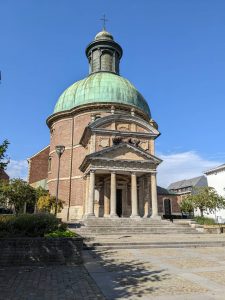 Across the busy road from the Wellington Museum is the elaborate church which was there at the time of the battle and used, like many churches, as a hospital to receive wounded men. Those of you who have followed me for a while know that I have a thing about old churches and this one was particularly peaceful, with a number of memorials to the men who fought and died during the Waterloo campaign. Memorials at this time tended to be paid for either by the family of the dead man or by subscription through the various battalions and regiments, so not surprisingly more of them relate to the wealthier regiments. Very few of the memorials even mention the NCOs and enlisted men apart from this one in the church, which may well be the first of its kind.
Across the busy road from the Wellington Museum is the elaborate church which was there at the time of the battle and used, like many churches, as a hospital to receive wounded men. Those of you who have followed me for a while know that I have a thing about old churches and this one was particularly peaceful, with a number of memorials to the men who fought and died during the Waterloo campaign. Memorials at this time tended to be paid for either by the family of the dead man or by subscription through the various battalions and regiments, so not surprisingly more of them relate to the wealthier regiments. Very few of the memorials even mention the NCOs and enlisted men apart from this one in the church, which may well be the first of its kind.
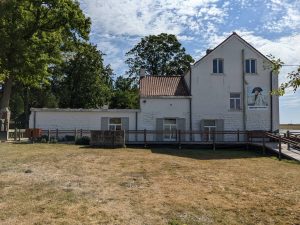 After lunch we moved on to Napoleon’s Headquarters in the farmhouse of Le Caillou, where Napoleon and his staff spent the night of June 17, 1815. The museum collection is spread over five rooms and tells the story of the Emperor’s actions in the hours before Waterloo. There are a number of artefacts relating to Napoleon, though Gareth queried whether some of the furniture was authentic given that the Prussians reputedly set fire to everything on their way through after Napoleon’s departure. Still, it gives a good sense of how the farm might have looked at the time.
After lunch we moved on to Napoleon’s Headquarters in the farmhouse of Le Caillou, where Napoleon and his staff spent the night of June 17, 1815. The museum collection is spread over five rooms and tells the story of the Emperor’s actions in the hours before Waterloo. There are a number of artefacts relating to Napoleon, though Gareth queried whether some of the furniture was authentic given that the Prussians reputedly set fire to everything on their way through after Napoleon’s departure. Still, it gives a good sense of how the farm might have looked at the time.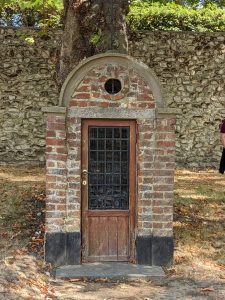 In the garden outside the farmhouse are one or two memorials. There is also an ossuary, which is a small building intended to serve as the final resting place of human bones. Ossuaries are often used where burial space is scarce but in this case it has become a depository for bones found on the battlefield over the years. I’ve seen photos of this but found the real thing unexpectedly moving.
In the garden outside the farmhouse are one or two memorials. There is also an ossuary, which is a small building intended to serve as the final resting place of human bones. Ossuaries are often used where burial space is scarce but in this case it has become a depository for bones found on the battlefield over the years. I’ve seen photos of this but found the real thing unexpectedly moving.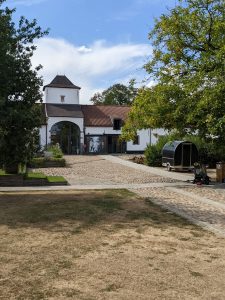
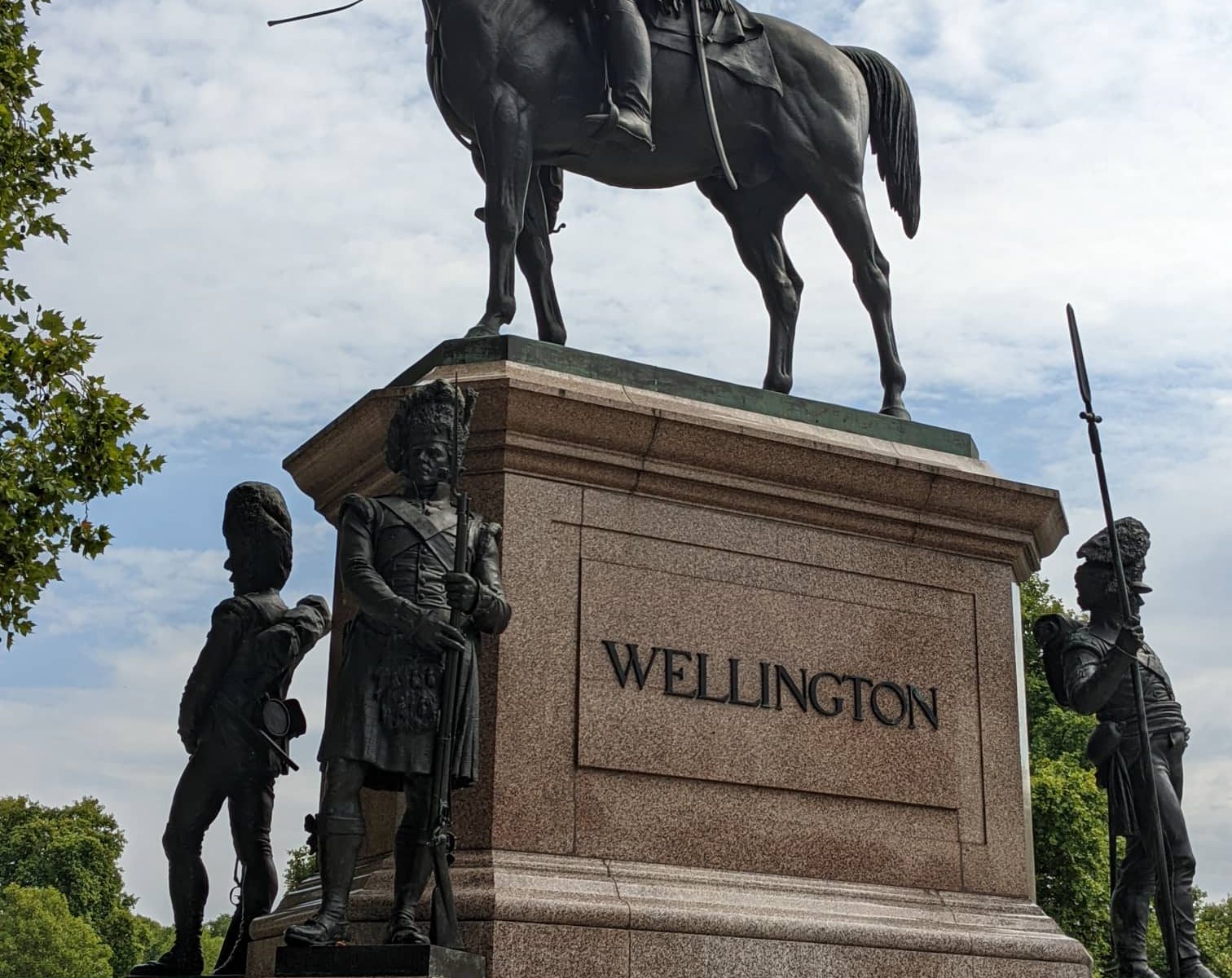
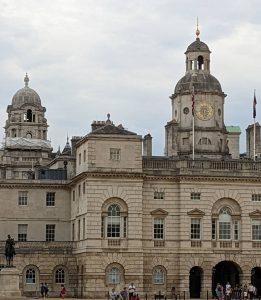
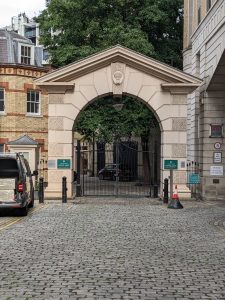
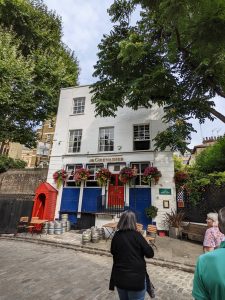
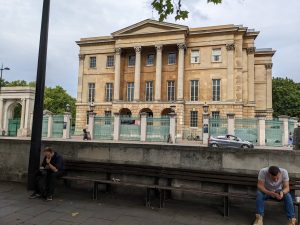
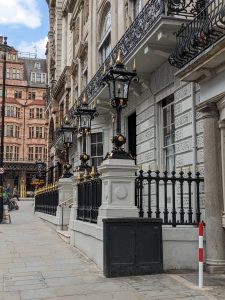
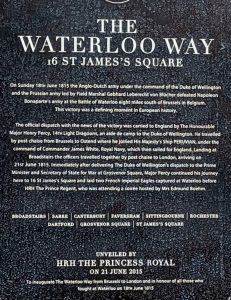
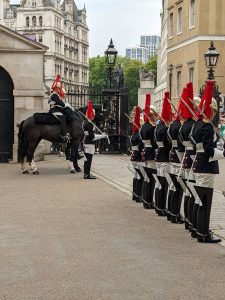 Our final stop for the day was the Horse Guards museum and were in time to see an inspection parade. After that it was back to the hotel in preparation for an early start on the Eurostar to Brussels the following morning.
Our final stop for the day was the Horse Guards museum and were in time to see an inspection parade. After that it was back to the hotel in preparation for an early start on the Eurostar to Brussels the following morning.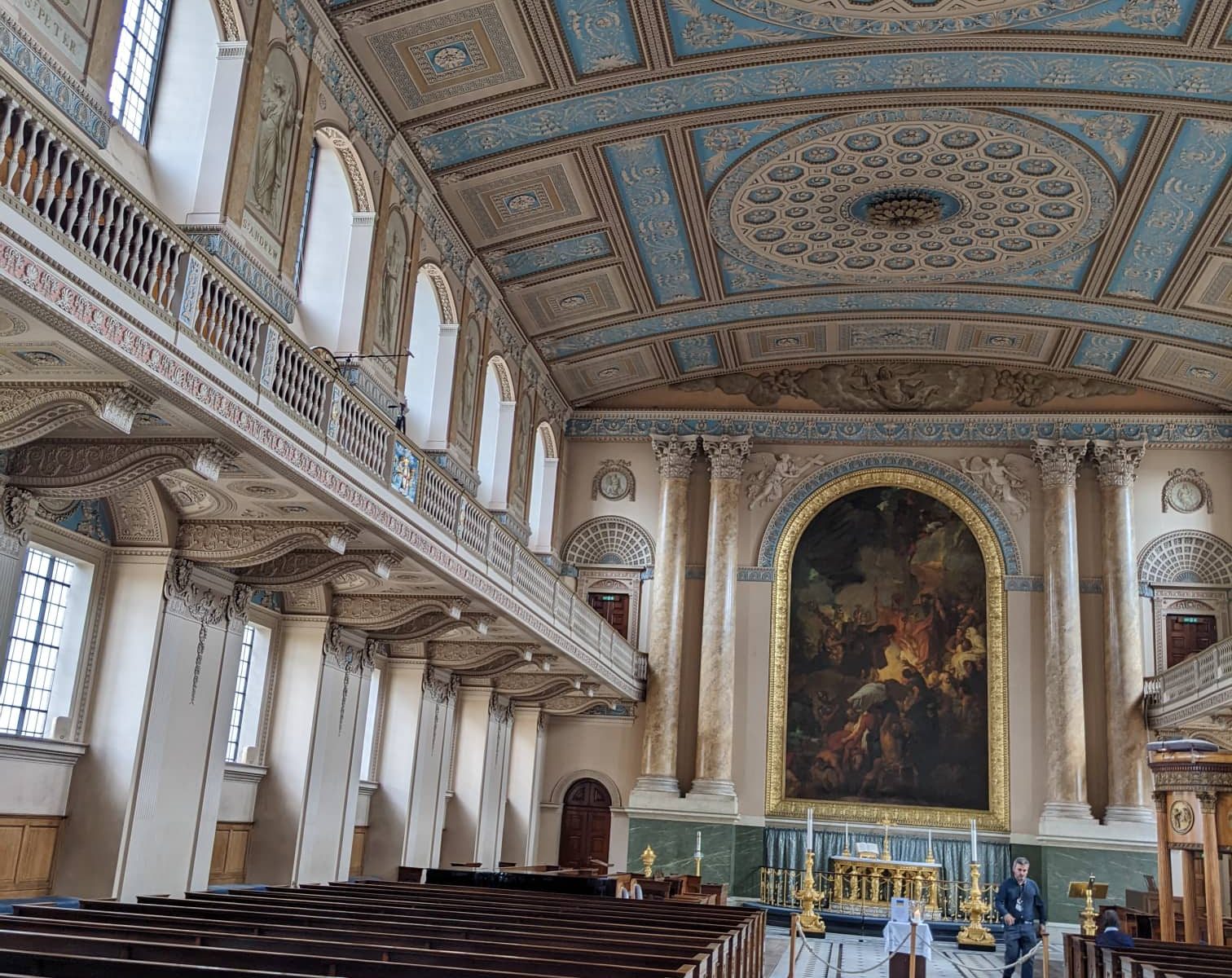
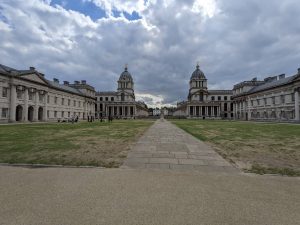 Waterloo 2022: prelude only really came about because I live on the Isle of Man. My much anticipated
Waterloo 2022: prelude only really came about because I live on the Isle of Man. My much anticipated 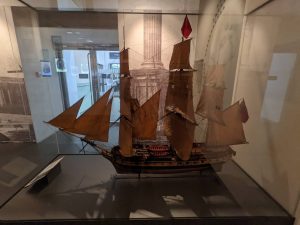 The
The 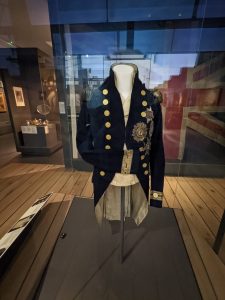 There is, as usual, an abundance of information and artefacts about Lord Nelson, England’s most feted naval hero including the clothing he was wearing when he was shot down on the deck of the Victory during the Battle of Trafalgar. While I’m grateful that the national obsession with Nelson means that EVERY navy museum has something relating to my period of interest, I can’t help imagining the howls of indignation of a few other navy officers of the era who really did some quite impressive stuff themselves, but don’t get a mention. Nevertheless, the National Maritime Museum is fascinating, with loads to see and do for both adults and children and I highly recommend it.
There is, as usual, an abundance of information and artefacts about Lord Nelson, England’s most feted naval hero including the clothing he was wearing when he was shot down on the deck of the Victory during the Battle of Trafalgar. While I’m grateful that the national obsession with Nelson means that EVERY navy museum has something relating to my period of interest, I can’t help imagining the howls of indignation of a few other navy officers of the era who really did some quite impressive stuff themselves, but don’t get a mention. Nevertheless, the National Maritime Museum is fascinating, with loads to see and do for both adults and children and I highly recommend it.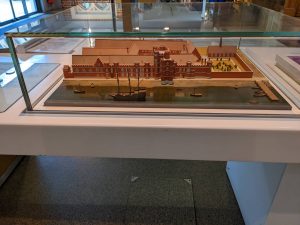
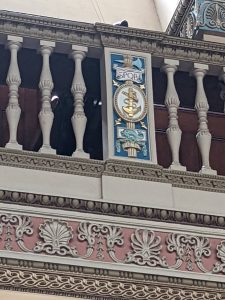 Greenwich Seaman’s Hospital was built on the orders of Mary II who was affected by the sight of wounded sailors coming home from the Battle of La Hogue. It is incredibly beautiful architecturally and both the Chapel and the Painted Hall are well worth a visit. I particularly liked the Chapel, which has naval motifs incorporated into the design.
Greenwich Seaman’s Hospital was built on the orders of Mary II who was affected by the sight of wounded sailors coming home from the Battle of La Hogue. It is incredibly beautiful architecturally and both the Chapel and the Painted Hall are well worth a visit. I particularly liked the Chapel, which has naval motifs incorporated into the design. 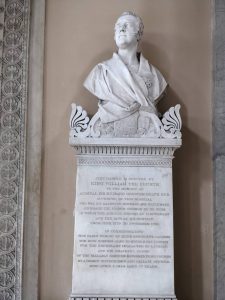
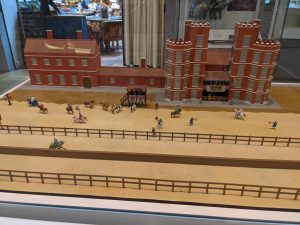
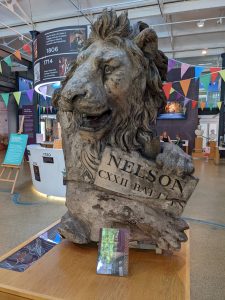 Nelson also features a fair bit, surprisingly enough. England’s Hero lay in state for several days in the Painted Hall and there is a small dedicated Nelson Room, but my favourite artefact is a lion which was apparently a model piece for the Nelson frieze. The lion is holding a stone which purports to claim that Nelson fought in 122 battles. I had this piece of information from the guide and I’ve not managed to check it at all, but my extensive reading on the subject of the Napoleonic navy so far has suggested that most of the time was spent either on tedious blockade duty or seething at home on half-pay. Nobody seemed able to answer my question about how Nelson managed to see quite so much action during his time in the navy but if I get to the bottom of it, I’ll let you know. Alternatively, if anybody else knows where I can find a list of these battles, I’d love to hear it. Nice lion, though.
Nelson also features a fair bit, surprisingly enough. England’s Hero lay in state for several days in the Painted Hall and there is a small dedicated Nelson Room, but my favourite artefact is a lion which was apparently a model piece for the Nelson frieze. The lion is holding a stone which purports to claim that Nelson fought in 122 battles. I had this piece of information from the guide and I’ve not managed to check it at all, but my extensive reading on the subject of the Napoleonic navy so far has suggested that most of the time was spent either on tedious blockade duty or seething at home on half-pay. Nobody seemed able to answer my question about how Nelson managed to see quite so much action during his time in the navy but if I get to the bottom of it, I’ll let you know. Alternatively, if anybody else knows where I can find a list of these battles, I’d love to hear it. Nice lion, though.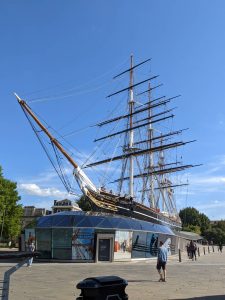 My final visit of the day was to the Cutty Sark, a nineteenth century tea clipper located in dry dock on the river bank. The Cutty Sark has a very sentimental place in my heart as it was a favourite place to visit as a child. We used to go to Greenwich a lot, getting the bus from Mile End and then walking through the Victorian foot tunnel under the river. I loved it there, the park and the eclectic market, the little shops, the Queen’s House and the Observatory, the graceful buildings of the Naval College. That much history in one place always set off my very eccentric imagination about the men and women who had lived in these buildings and walked these streets in the past. But the absolute joy for me was the once or twice a year when we were allowed to actually go aboard the Cutty Sark.
My final visit of the day was to the Cutty Sark, a nineteenth century tea clipper located in dry dock on the river bank. The Cutty Sark has a very sentimental place in my heart as it was a favourite place to visit as a child. We used to go to Greenwich a lot, getting the bus from Mile End and then walking through the Victorian foot tunnel under the river. I loved it there, the park and the eclectic market, the little shops, the Queen’s House and the Observatory, the graceful buildings of the Naval College. That much history in one place always set off my very eccentric imagination about the men and women who had lived in these buildings and walked these streets in the past. But the absolute joy for me was the once or twice a year when we were allowed to actually go aboard the Cutty Sark.